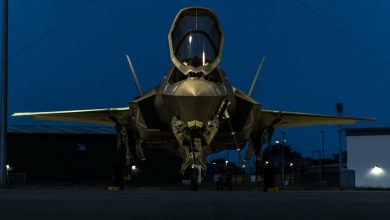Analysis: How China is challenging the U.S. military’s dominance in space

In recent years, China has closed the gap with the U.S. in space. “We seem to be asleep at the switch,” said Dean Cheng, an expert on China’s military space program.
China’s rapidly growing arsenal of anti-satellite weapons could cripple America’s military in a crisis and the U.S. is scrambling to shore up its defenses miles above the Earth.
China is testing and developing an array of weapons and tools that could destroy, disable or hijack satellites that the U.S. military heavily relies on to operate around the world, Defense Department officials and experts say.
In recent years, China has rapidly closed the gap with the U.S. in space. Beijing is ramping up the pace of its satellite launches and mastering capabilities that only the United States had a decade ago, experts say.
China doubled its number of satellites in orbit between 2019 and 2021, from 250 to 499, according to the Defense Intelligence Agency. It is also developing increasingly advanced spy balloons and hypersonic missiles that operate in near space, above the altitude flown by most aircraft but below the orbit of satellites.
In recent weeks, China successfully tested the equivalent of a refueling tanker for satellites, a game-changing innovation that would enable Beijing to extend the life of satellites that would otherwise expire after running out of fuel, Defense officials say.
“I think the Chinese are giving us a real good run for the money,” said Dean Cheng of the U.S. Institute of Peace think tank, an expert on China’s military space program.
The Pentagon is investing billions of dollars to fend off the challenge presented by China’s space weaponry, but much of the work is shrouded in secrecy.
At a sprawling rocket factory run by aerospace giant United Launch Alliance in Alabama, NBC News got a firsthand look at the effort to make U.S. satellites and other space-based systems less vulnerable to attack from China and other adversaries.
“We know when we’re threatened,” said Tory Bruno, chief executive of United Launch Alliance, which builds many of the rockets that carry American military and intelligence satellites into space.
“We need to be able to counter the threat, either by getting out of the way, interfering with that threat, perhaps occupying an orbit that an attacking satellite from China would like to be in,” Bruno said.
One of the potential challenges for U.S. space forces is a Chinese satellite equipped with a robotic arm that can pull an adversary’s satellite out of orbit.
The Chinese have tested the robotic arm and demonstrated it can move a defunct satellite in and out of geosynchronous or GEO orbit, according to Army Gen. James Dickinson, head of U.S. Space Command.
“They were actually able to … take that satellite out past the GEO orbit, drop it off and return back to the GEO orbit, and did that in a very short period of time, only a few days,” Dickinson said at an event last month at the Center for Strategic and International Studies think tank.
To counter the robotic arm, engineers are designing satellites that would be able to quickly maneuver out of reach of the arm, according to Bruno.
The Pentagon also has sought to work with the private industry to produce smaller, cheaper satellites that could effectively “flood the zone” and make it harder for adversaries to target sensitive satellites.
Achilles’ heel
If a war broke out between the U.S. and China, it would likely start in space, experts say.
For years, the United States took its dominance in space for granted. But China’s military strategists recognized that the U.S. military’s global reach was wholly dependent on satellites, and that it represented a potential American Achilles’ heel. Satellites allow the U.S. military to communicate, to navigate, to gather intelligence and to strike targets with precision around the world.
“Space is decisive and critical to what we do every day,” Gen. Dickinson said.
Defense officials say China has been working on missiles — launched from the ground or in space — to take out enemy satellites or the ground stations that launch them. Beijing also is developing ground or space-based high-powered lasers to destroy or damage enemy satellites.
U.S. commanders worry about China waging cyberattacks on satellites that could steal the data collected or redirect the satellite on a different mission or orbit.
“You deny the adversary information, or you give them false or fake information,” said Cheng, the expert on China’s military space program. “You could say to the satellite, ‘deorbit, come crashing down’ and there goes a billion-dollar payload.”
In 2007 and 2008, China was suspected of hacking two U.S. government nonmilitary satellites four times, according to a report to Congress.
U.S. officials declined to discuss what offensive space weapons the Pentagon may be pursuing. But experts say both countries engage in cat-and-mouse satellite maneuvers in space, trying to ascertain the other side’s plans and capabilities.
For Washington, perhaps the most worrisome development has been China’s advances in hypersonic maneuver missiles, which do not follow a predictable trajectory like that of ballistic missiles. Launched from a rocket, hypersonic missiles fly at least 20 times the speed of sound, can circle the Earth and strike a target while evading most ground-based air defenses. Hypersonic vehicles could pose a risk to satellites as well.
Cheng said the United States has been caught flat-footed regarding hypersonic and it’s unclear whether it can develop its own fleet.
“We seem to be asleep at the switch,” he said.
Bruno, the head of United Launch Alliance, said that while hypersonic missiles can dodge conventional missile defenses, a laser could offer a way to thwart a hypersonic missile attack.
“You can’t outmaneuver the speed-of-light laser,” Bruno said.
U.S. officials declined to say whether such a weapon is under development.





